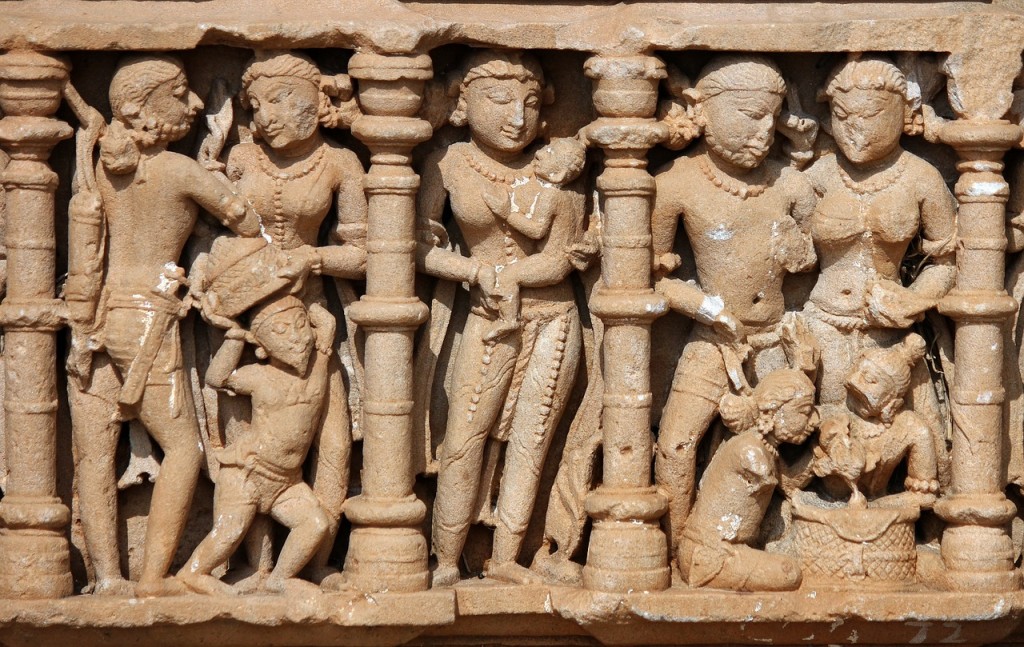History of Ancient India
History of Ancient India began with the Indus civilization and the arrival of the Aryans. These two stages are usually known as the Pre-Vedic and Vedic period. The first Veda is the org which tells about the past of India and is the earliest source of information. According to the ambiguous and vague astronomical information is likely to be composed around 1500 BC-1000 BC.

History of Ancient India
Ashoka’s Period
In the fifth century, the majority of India was under the rule of Ashoka. The sixth Century B.C. was a period of immense turmoil in India. The empire of Magadha, one of the sixteen grand Janapadas had become supreme over other kingdoms of the Ganges Valley. This period also saw the emergence of a variety of deviating sections in India. This was the time when Buddhism and Jainism come forward as popular protestant movements as a serious challenge to the Brahmanic prevailing attitude.
Ashoka was one of the most commanding kings of the Indian subcontinent. A head of the Mauryan Empire, Ashoka ruled over the country from 273 BC to 232 BC. The reign of Emperor Ashoka sheltered most of India, South Asia and beyond, stretching from present day Afghanistan and parts of Persia in the west, to Bengal and Assam in the east, and Mysore in the south.
Mauryan Period
This period was pursued by the Mauryas out of which the most renowned was Ashoka the Great. But his eminence rests not so much on military conquests as on his celebrated abandonment of war.
Chandragupta Maurya was the founder of the Maurya Empire in India. He is recognized for bringing together the minute fragmented kingdoms of the country and combining them into a single large empire. As per the Greek and Latin accounts, King Chandragupta Maurya is known as Sandracottos or Andracottus. The great economist of the world “Chanakya” had given their tips about economics in this period.
Guptas’ Period
For the next four hundred years (after the great Mauryas), India remained politically separated and feeble. It was constantly raided and plundered by foreigners. Steadiness was refurbished by the Guptas. The Gupta age was the period of tranquility and opulence and witnessed an extraordinary blossoming of art, literature and the sciences. This period also saw the foundation of Hindu temple architecture.
Harshavardhana’s Period
After the Guptas there was serenity, in the era of Harshavardhana of Kannauj. A Chinese traveler, Hsuen-tsang visited India from 629 – 645 A.D. during the reign of Harshavardhana. His account gives us a chance to make a note of the changes that had taken place in the lives of the Indian people since the rule of the Guptas.
Harshavardhana was an Indian Emperor, who ruled over the northern parts of India for a period of more than forty years. His empire was spread over the states of Punjab, Bengal, Orissa and the entire Indo-Gangetic plain, lying to the north of the Narmada River.
Each epoch is matchless in its unique culture. In the same way Indian art forms have endlessly progressed over thousands of years. In ancient India, a range of art forms like paintings, architecture and sculpture evolved. The history of art in ancient India set in motion with prehistoric rock paintings.
India and its neighboring countries are so similar in culture and climatic conditions that the region is on occasionally called the Indian sub-continent. In ancient times the geography of India was a slight different than what it is these days. In the northern part of India stand the Himalayan Mountains and the Hindu Kush stand in the North West.
In the Vedic age people did not have a settled life and were nomads but with development in agriculture people started to settle down in groups. The organization was mostly tribal and the head of the tribe was supposed to be the raja or the King.
The predominant religion in ancient India was Hinduism. The ancestry of Hindu religion can be traced back to the Vedic period. Hinduism is believed to be the oldest of foremost religions and initiated in northern India.According to Greek philosophers slavery did not exist in ancient India.
Aryabhatta’s Inventions
Aryabhatta, the great astronomer and scientist, discovered zero. The Indus valley civilization was one of the most advance civilizations in provisions of town planning etc.
Read More about Aryabhatta : Biography of Aryabhatta
Indus Valley Civilization
Indus Valley Civilization was an ancient civilization that flourished in the Indus and Ghaggar-Hakra river valleys, now in Pakistan, along with the northwestern parts of India, Afghanistan and Turkmenistan. The civilization, which is also known as Harappan Civilization, lasted from 3300 BC to 1700 BC. The discovery of the Ancient Indus River Valley Civilization was made, when the Harappan city, the first city of Indus Valley, was excavated.
Read Also : History of India – Cave to Home
Vedic Period
The Vedic Period or the Vedic Age refers to that time period when the Vedic Sanskrit texts were composed in India. The social order that flourished during that time is known as the Vedic Period, or the Vedic Age, Civilization. The Vedic Civilization flourished between the 1500 BC and 500 BC on the Indo-Gangetic Plains of the Indian subcontinent.
The Vedic period spotted the end of the history of ancient India and thus the commencement of the Incredible India .
Questions on History of ancient India :
- Outline of ancient India
- Ancient India History
- Ancient Civilizations for Kids
- Ancient India From the Indus Valley Civilisation to Mughal Imperialism
- When did ancient India begin and end?
- What is the history of India?
- Who all invaded India?
- What is ancient India?
- Significance of Ancient Indian History
- Brief History Of India
- Revisiting the history of ancient India






